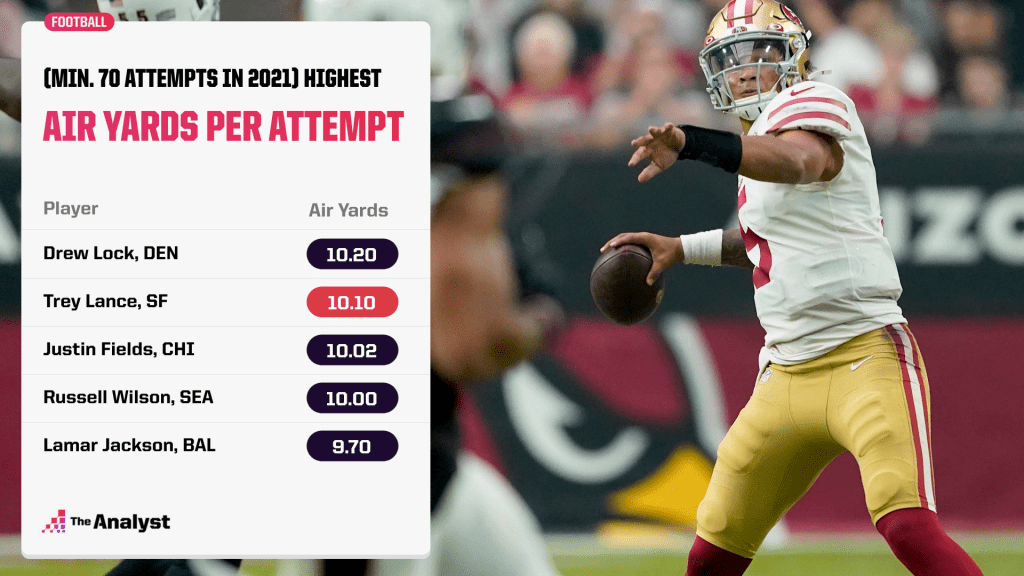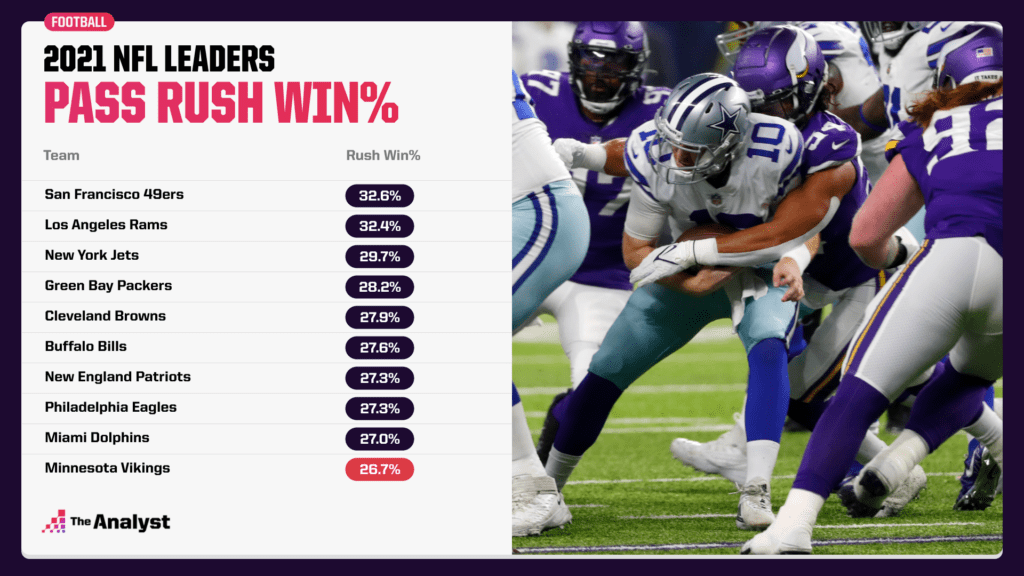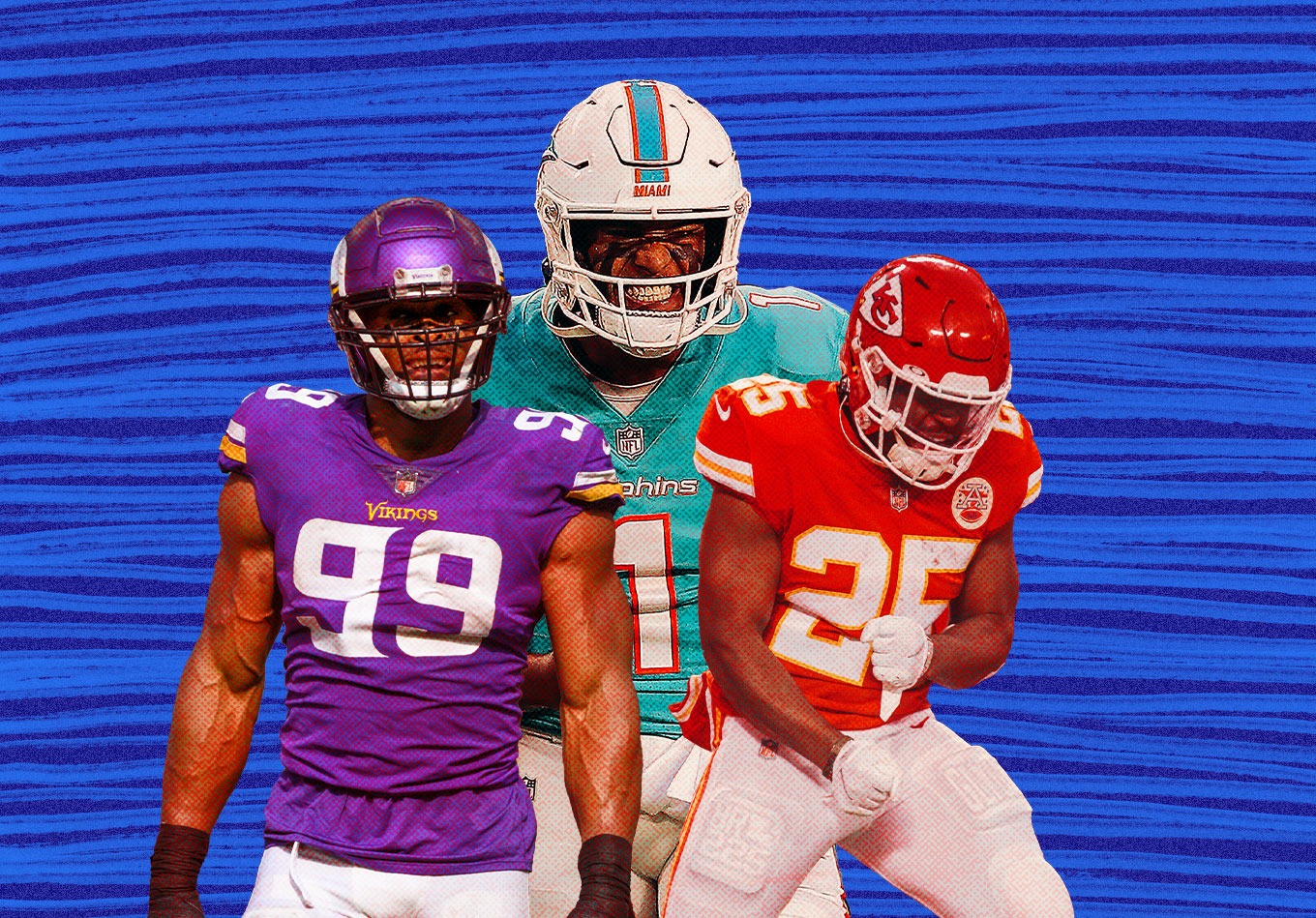The NFL is all about evolution. The constant fight to gain a decisive advantage in a league in which those who can adapt fastest are kings consistently leads to sweeping changes every offseason.
While it’s the raft of head coaching changes that dominate the headlines when the regular season gives way to ‘Black Monday,’ it’s the more granular alterations to a team’s approach that can often have the greatest influence on a franchise’s fortunes in a given season.
Switches in scheme or a diversion away from a team’s long-standing tendencies are regularly brought on by the arrival of a new coaching staff or a change in coordinator, but personnel moves also frequently dictate the approach coaches settle on as they plot a path towards success.
Schematic decisions that may not cause much of a league-wide stir can end up having a huge impact on the outcome of a season, and there are no shortage of such changes that figure to have a significant bearing on the race for the playoffs in 2022.
Here are five switches in scheme or tendencies that could play a defining role in the coming campaign.
Miami Dolphins: Can McDaniel transform Tua?
The Dolphins’ second-half surge in 2021 was tied to their reliance on the run-pass option as they tailored their offense to Tua Tagovailoa’s strengths.
Not only were the Dolphins prolific in going to the RPO, they were very effective when they called them.
Miami called a RPO on 12.3% of their pass attempts, the league average was 3.5%. They averaged 7.25 yards per play on RPOs, comfortably above the league average of 5.85.
Given their success on those plays and Tagovailoa’s comfort in executing them, RPOs will still be a part of the Miami attack in 2022.
But the usage numbers are unlikely to be as high under new head coach Mike McDaniel, who brings his take on the Kyle Shanahan offense to Miami after serving as the San Francisco 49ers offensive coordinator last year.
McDaniel will likely reduce the number of straight drop-back pass plays for Tagovailoa. The Dolphins ran them on 34.0% of passes last year, below the league average of 36.1% but well above the 2021 49ers, who used such plays only 22.9% of the time while utilizing the quick game on 41.0% of passes compared to the Dolphins’ 26.07%.
The arrival of McDaniel will likely tip the balance towards the quick game for Miami in 2022 as he looks to give Tagovailoa easy buttons in the same way Shanahan did for Jimmy Garoppolo to get the ball into the hands of Jaylen Waddle and Tyreek Hill to do damage after the catch.
McDaniel, who was San Francisco’s run-game coordinator prior to his promotion last year, will undoubtedly lean on Raheem Mostert, Chase Edmonds and a ground attack certain to be heavily based around inside and outside zone runs to take the burden off Tagovailoa and set up play-action passes.
Miami used play-action on 14.6% of their passes in 2021, above the average of 12.7% but still trailing the 49ers (15.9%). With Tagovailoa’s ability to hit Hill and Waddle downfield with consistent accuracy in question, look for McDaniel to put significant stress on defenses by attracting linebackers up to the line of scrimmage with play-action and then running Hill and Waddle cross-field on horizontal routes at the intermediate levels that are well within his quarterback’s range.
Under Shanahan, McDaniel has had an education into scheming his weapons into space and should thrive at doing so when running an offense himself for the first time. Tagovailoa’s challenge will be to prove he can deliver and take advantage of the favorable situations in which his coach will put him.
Fail, and the Dolphins may soon be searching for a new franchise quarterback.
San Francisco 49ers: More Deep Balls and Diversity
The more things change the more they stay the same. Shanahan has insisted nothing in his playbook has changed as he enters the season with a new starting quarterback, and the 49ers head coach will unexpectedly have the same top two signal-callers as he did last season.
It is the order that has flipped, with Garoppolo agreeing a reworked contract for 2022 to be Trey Lance’s backup. Regardless of what Shanahan says, the 49ers’ approach is likely to be different with Lance under center.
Lance averaged 10.10 air yards per attempt across his 10 full quarters of action last season (he started two games and played the second half when Garoppolo was injured in Week 4), the second most among quarterbacks with at least 70 pass attempts.

On the other end of the scale, Garoppolo’s 7.38 air yards per attempt were well below the league average of 7.99. Garoppolo attempted just 26 passes of 21 or more air yards the entire season, while 11 of Lance’s 70 passes were of that distance.
The scheme isn’t changing, but the tendencies certainly will. Lance will be more aggressive and attack downfield more often, likely leading to explosive splash plays that are not necessarily reliant on receivers creating yardage after the catch.
Though the plays may have already been in Shanahan’s playbook, there’s sure to be more of an emphasis on the threat of the quarterback run with Lance at the helm.
Just 2.6% of the 49ers’ run plays came on the zone-read last year, below the league average of 4.2. That number should increase as should San Francisco’s usage of the RPO game, which the Niners used on only 1.1% of pass plays last year but averaged 8.43 yards per play when they did.
With Lance and the running back both threats to run on such plays, defenses will have to account for three possibilities when defending RPOs against the 49ers, exemplifying how much more diverse their offense can become with the 2021 third overall pick under center.
San Francisco’s attack will be even more varied and more aggressive in 2022, but it’s also likely to be more volatile due to Lance’s inferior precision to Garoppolo on the intermediate passes that set up the yards after catch opportunities on which the 49ers have done such damage in recent years.
How that volatility impacts the win-loss column will determine whether Garoppolo gets on the field at any point in the final year of his contract.
Minnesota Vikings: Looking to the 3-4
The Vikings swapped out basically everything this offseason. New general manager, new head coach – who will also be the offensive play-caller – and new defensive coordinator.
Though head coach Kevin O’Connell’s offense will be different to the one run by former offensive coordinator Klint Kubiak, the systems are similar enough that Kirk Cousins and Co. are unlikely to endure too much pain in acclimating to the new scheme.
The biggest adjustments will come on the defensive side of the ball, which will be run by Ed Donatell, who spent the last three seasons coordinating Vic Fangio’s defense for the Denver Broncos.
The Fangio defense has become the en vogue scheme in the NFL as acolytes such as Brandon Staley have put their spin on it and the two-high safety shells that have been a hallmark of the system have helped limit explosive plays and level the playing field a little in an offense-dominated league.
Denver played Cover 1 robber – which is where a safety from a two-high look drops down into the box to disrupt route in-breaking routes in the congested area – as the defense’s primary coverage in 2021. The Broncos ran Cover 1 robber 41.9% of the time in a 2021 season in which the league average was 14.2%.
The Vikings were more varied but still used Cover 1 robber more than any other coverage, relying on it for 21.8% of defensive snaps.
Whether Donatell uses that coverage to same extent in Minnesota remains to be seen, but the transition for the Vikings’ secondary may be a smooth one given how often they utilized the same shell under Mike Zimmer.
The most significant change to the defense comes up front, with the Vikings switching from a 4-3 to a 3-4.
Though defensive fronts are much more hybrid in the modern NFL, the tenets of the 3-4 front are the same. The three-man line is tasked with holding ground and filling up gaps at the point of attack, offering more space to the four linebackers to take better pursuit angles against the run and opening a wide menu of blitz packages against the pass.
Minnesota’s two starting outside linebackers are de-facto edge rushers and both players who should each theoretically prosper in that role. Za’Darius Smith has extensive experience with the 3-4 from his time with the Baltimore Ravens and Green Bay Packers while the athletic profile of Danielle Hunter – whose 60.5 sacks since 2015 are tied for the seventh most in the NFL – makes him an ideal candidate to excel as a stand-up pass rusher.
Possessing two impressive space-eating interior defenders in Harrison Phillips and Damon Harrison and an inside linebacker in Eric Kendricks, who had five sacks last year, the Vikings have the personnel to continue to thrive rushing the passer despite the change in front. They were 10th in pass rush win rate in 2021, had the sixth-most pressures (291) and the second-most sacks (51).

Despite their success getting after the quarterback, the Vikings were 26th in yards per play allowed (5.66), with their struggles tied to a run defense that allowed 51 runs of at least 10 yards. Only 12 teams allowed more.
If the switch to the 3-4 helps the Vikings grow more stout against the ground game, then a team with the talent on both sides of the ball to contend for the playoffs will be in a much better position to make noise as a potential wild-card team.
Las Vegas Raiders: An Overdue Defensive Switch
The Raiders will have a new offensive system after hiring Josh McDaniels as their head coach and will also have the benefit of expanded firepower following the blockbuster trade for All-Pro wide receiver Davante Adams.
Las Vegas will have the personnel and the offensive scheme to go blow for blow with their high-powered rivals in the AFC West. The question is whether the defense can do enough to contain their divisional foes, and its success in doing so likely rests on how the Raiders adapt to new defensive coordinator Patrick Graham.
In 2021, the Raiders only gave up 5.2 yards per play – the ninth fewest in the NFL – and ranked seventh in defensive EVE (our efficiency vs. expected model). However, former coordinator Gus Bradley’s steadfast commitment to single-high Cover 3 defenses saw Las Vegas shredded for 888 net yards in a pair of defeats to Patrick Mahomes and the Kansas City Chiefs.
Las Vegas played Cover 3 zone on an incredible 65.8% of snaps last season. The league average was 23.8%. In his final year as the New York Giants’ defensive coordinator, Graham relied heavily on Cover 3, which the Giants used 45.6% of the time.
But Graham used a wider range of coverages more regularly than his Raiders predecessor. The Giants played Cover 1 robber, Cover 2 and Tampa 2 all at a rate above the league average.
The Raiders’ secondary talent is questionable, but Graham is a coordinator who predominantly plays the coverage shell with which they are most familiar and is more flexible than Bradley. As such, the transition to Graham should be a relatively seamless one for the Raiders’ defensive backfield. However, it will be the unit’s ability to excel in a defense that promises to be much more multiple than it was a year ago that will determine whether it improves.
Las Vegas’ defense did not embrace the two-high revolution in 2021. With Graham running a group that will be tasked with stopping three explosive downfield passers in Mahomes, Justin Herbert and Russell Wilson in the AFC West, such shells will almost certainly become a bigger part of the game plan. How the Raiders’ defenders adjust to playing those coverages more frequently will have a huge bearing on their success in a loaded division.
Kansas City Chiefs: Will ‘Big Red’ Turn to the Run?
As the Raiders perhaps shift towards a more two-high heavy world, the Chiefs’ hopes of regaining the Lombardi Trophy will in part be tied to their proficiency in attacking such defenses.
The Chiefs’ often exaggerated struggles against two-high coverage shells dominated much of discussion in the first half of last season as defenses looked for a way to take away the shot play to Hill. By the end of the year, the Chiefs appeared to have solved the riddle and averaged 33.2 points per game over the final six weeks of the regular season.
Yet with Hill gone, the Kansas City offense has lost the reason many opponents not named the Raiders defended them with such coverages.
Defenses are unlikely to suddenly move away from the two-high looks when playing Kansas City now that Hill is a Dolphin, and teams will continue to dare Mahomes to take what he’s given underneath and attempt to limit his opportunities to go downfield to Marquez Valdes-Scantling and Mecole Hardman.
Mahomes will need to be patient and connect with tight end Travis Kelce and other receivers who should thrive attacking the underneath areas such as Juju Smith-Schuster and second-round pick Skyy Moore.
But the Chiefs may also look to run the ball more to get defenses out of those coverages and draw more defenders into the box, opening the deep areas of the field for Mahomes to attack. Kansas City ran the ball on only 31.8% of offensive snaps last season and there’s plenty of evidence to suggest they would succeed if they did so more often.
The Chiefs ranked first in run block win rate in 2021 – their exploits in that regard allowing Clyde Edwards-Helaire to average 3.1 yards before contact per attempt, the eighth-most among running backs with at least 100 attempts – and Kansas City was seventh in yards per play on the ground (4.54). Rookie undrafted free agent Isaiah Pacheco has opened eyes in training camp and could blossom into a dynamic threat out of the backfield.
It is tough to make the case for taking the ball out of Mahomes’ hands. However, as defenses continue to present him with more varied and complex looks, there is a need for a greater balance in the offense.
Between using a first-round pick on Edwards-Helaire and building an offensive line that can produce dominant run blocking, the Chiefs have spent significant resources on players with the potential to help them achieve that balance by committing to what has been an efficient run game.
A modest shift in their offensive tendencies could be the key to the Chiefs getting back on top despite the loss of one the league’s most fearsome playmakers.
Enjoy this? Subscribe to our mailing list to receive exclusive weekly content.
